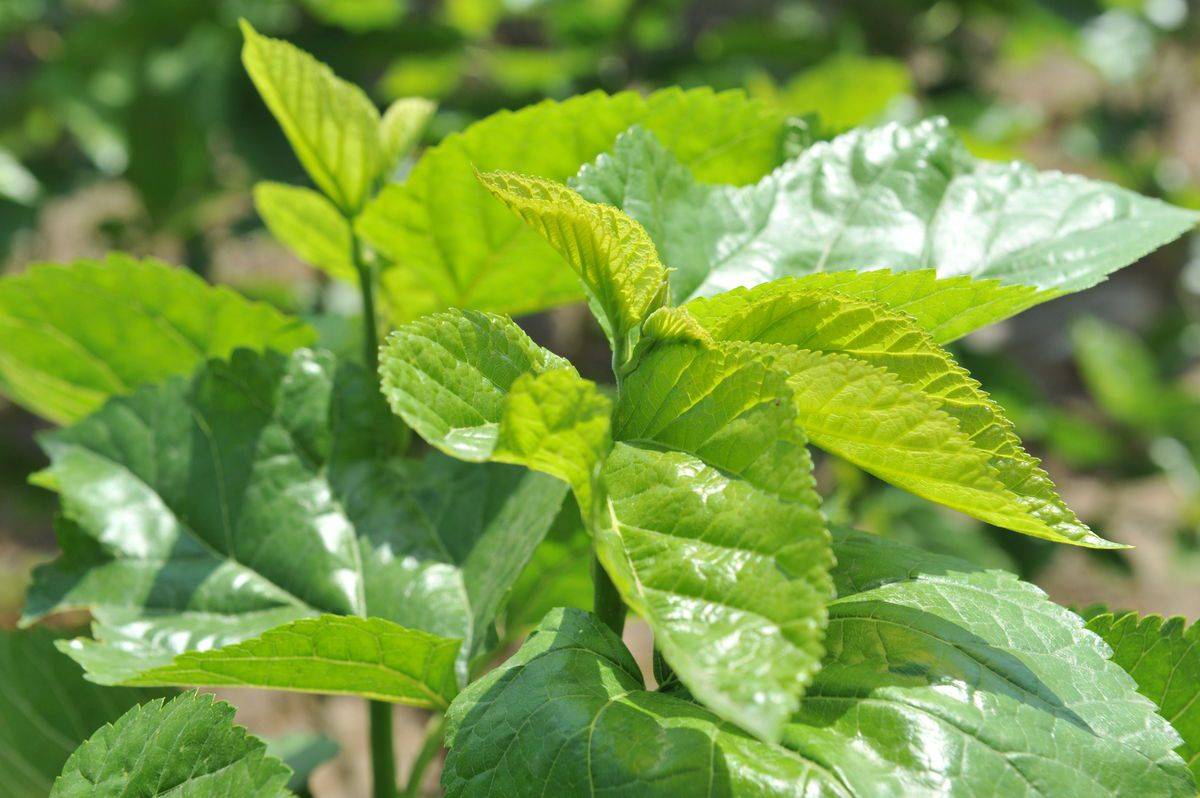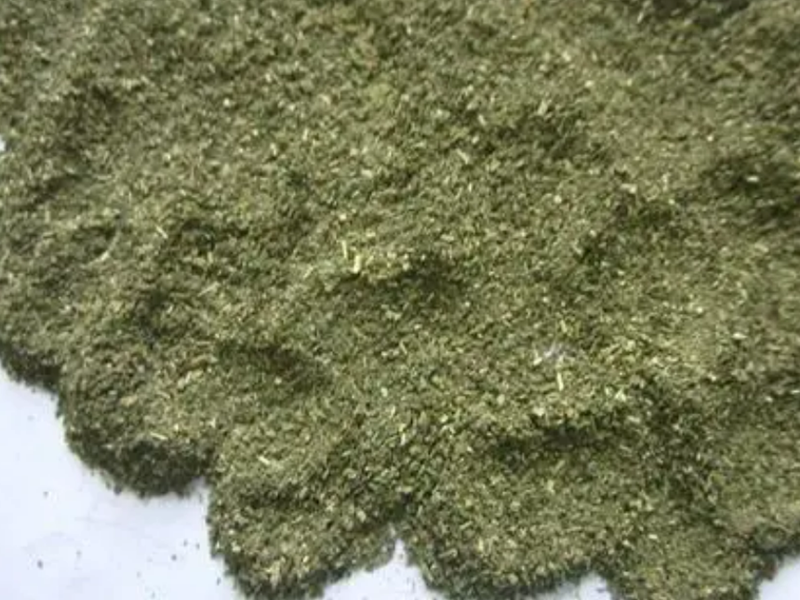Applications of Fermented Mulberry Leaf Powder
Mulberry is a deciduous perennial woody plant in the Mulberry family. It contains balanced amino acids, vitamins, trace elements, phytosterols, flavonoids, alkaloids, polysaccharides and other bioactive substances. Mulberry leaves were first known for feeding silkworms, and later for their unique nutritional characteristics, they were used as feed additives. Mulberry leaves are rich in nutrients such as protein (21-27% crude protein), amino acids and vitamins, as well as a large number of anti-nutritional factors such as phytic acid and tannin, in addition, mulberry leaves also contain high levels of crude fiber, which limits the amount of common mulberry leaves added to livestock feed.
The benefits of Microbial fermentation mulberry leaf powder
Microbial fermentation can change the composition and content of nutrients in mulberry leaves through its life activities. After microbial fermentation, the macromolecular proteins of mulberry leaves can be degraded into small peptides, soluble proteins and free amino acids, and non-protein nitrogen can be converted into bacterial proteins by microbial action, and the content of true proteins can be increased. Many experiments have proved that after microbial fermentation, the contents of polypeptides and amino acids increase, the contents of anti-nutrition factors decrease, and the contents of probiotics, bioactive ingredients and other beneficial products are rich in mulberry leaves. In the industry, bacteria (Lactobacillus, Bacillus, etc.) and fungi (yeast, mold, etc.) are commonly used as fermentation strains. In general, Bacillus and Aspergillus oryzae mainly produce protease, lactic acid bacteria and Lactobacillus mainly eliminate anti-nutrient factors, and trichoderma and rhizopus can optimize the active ingredients.
The fermentation method can enhance total phenolics, ferric reducing antioxidant power, a-amylase inhibition activity and antilipoxygenase activity of mulberry leaves. Moreover, it can also enhance the DPPH scavenging activity and albumin denaturation inhibition activity of mulberry leaf proteins. The mold fermentation process can produce a large number of enzymes such as protease, cellulase, pectinase and esterase, which can degrade macromolecular substances such as protein, cellulose and pectin found in the raw material mulberry leaves to different degrees. In addition, it can further promote the conversion of alcohols, hydrocarbons, terpenes, aromatic rings, aldehydes and ketones to aroma substances.
Fermentation is an effective way to reduce dietary anti-nutritional factors in woody forage plants, such as mulberry leaves and fruits. Specifically, microbial fermentation significantly enhanced total phenolics content, ferric reducing power, a-amylase inhibition activity, and albumin denaturation inhibition activity of mulberry leaves, whereas microbial fermentation improved DPPH scavenging activity and glycogen oxidation inhibitory activities of mulberry fruits. The application of these natural extracts to functional foods and feeds is promising because they can provide health-promoting benefits.
Fermented mulberry leaf powder for pigs
Adding 5%-15% fermented mulberry leaf powder to pig food can significantly improve production performance, shorten growth cycle, reduce feed cost and improve intestinal health, but the maximum added amount can not exceed 15%. Adding proper proportion of fermented mulberry leaf powder in the diet of finishing pigs can improve product quality and lipid metabolism, and the best effect is 5%-15%. It was found that feeding 15% fermented mulberry leaf powder could significantly improve the growth performance, shorten the growth cycle and improve the meat quality of fattening pigs. Adding 2%-4% fermented mulberry leaf powder can significantly increase feed to gain ratio of weaned piglets. In addition, adding 5% fermented mulberry leaves to the diet of weaned piglets can effectively treat viral gastroenteritis of piglets and maintain intestinal health. Because the digestive tract of weaned piglets is not yet developed, the use of 2%-4% fermented mulberry leaf powder can increase the special flavor and inductivity of the diet, which is conducive to the digestion, absorption and utilization of nutrients. In the growth and fending stage, fermented mulberry leaf powder can be added to replace soybean meal by less than 15%, which can improve the production performance while improving the pork quality and reducing the production cost.
Fermented mulberry leaves for chicken
The supplementation of fermented mulberry leaf powder in the diet of broilers can increase antioxidant capacity, enhance immune function and improve meat quality. The results show that dietary supplementation of 20% fermented mulberry leaf powder can significantly increase the serum total protein (TP) and globulin (GLB) contents, and significantly reduce the serum total cholesterol (TC) and triglyceride (TG) contents of bearded chickens. This shows that fermented mulberry leaf powder can enhance immunity and reduce blood lipids. The meat yellowness (b*) value gradually decreased with the increase of supplemental level, which may be due to the obvious antioxidant effects of bioactive substances such as flavonoids and polysaccharide alkaloids in mulberry leaves, which weakened the degree of myoglobin oxidation (Terashima M,2012). In addition, some studies have found that dietary supplementation of fermented mulberry leaf powder can cause changes in intestinal flora of broilers, the main changes are significantly increasing the content of lactic acid bacteria and decreasing the content of Escherichia coli. Fermentation treatment reduces dietary pH and provides an acidic environment for beneficial bacteria such as lactic acid bacteria in the gut, which promotes beneficial bacteria to inhibit the proliferation of harmful bacteria through nutrient competition and space occupying (Caggianiello G,2016). Therefore, the addition of 5%-10% fermented mulberry leaf powder in the diet of broilers can improve the immune function and antioxidant capacity of broilers, regulate the lipid metabolism of broilers, improve meat quality and promote intestinal health.
Fermented mulberry leaf powder for beef cattle
Adding fermented mulberry leaf powder to ruminant diet can improve economic benefits, improve meat quality and reduce rumen volatile fatty acid content. It was found that adding 20% or less fermented mulberry leaf powder had no significant effects on growth performance and blood biochemical indexes of growing and fattening cattle. A diet supplemented with 22.5% fermented mulberry leaf powder can improve carcass quality, increase slaughter rate and the eye muscle area, and regulate lipid metabolism in beef cattle. The dietary supplementation of 30% fermented mulberry leaf powder has no significant effect on lipid metabolism, but can effectively improve meat quality and enhance body immunity. The addition of silage mulberry leaf powder had no significant effect on the growth performance of beef cattle, and could significantly reduce the concentration of volatile fatty acids in the rumen, but had little effect on fecal flora.
In general, adding a certain proportion of fermented mulberry leaf powder to animal diets can improve meat quality, but a single excess can lead to a decline in the growth performance of livestock and poultry. More studies are needed to determine the optimal supplemental content. The application of fermented mulberry leaves in livestock and poultry of different varieties and different development stages, as well as its functional role and mechanism of action need to be further studied. In the future, more research is needed to identify the chemicals in the fermented mulberry leaves so that the biochemical reactions responsible for increasing the antioxidant, anti-inflammation and hypoglycemic activities of mulberry leaves can be elucidated. Further, the fermentation of mulberry leaves using different microorganisms should be investigated to determine the best technique for enhancing their nutritional value. This will contribute to the development of new protein feed resources that can increase the yield and improve the quality of meat products.


